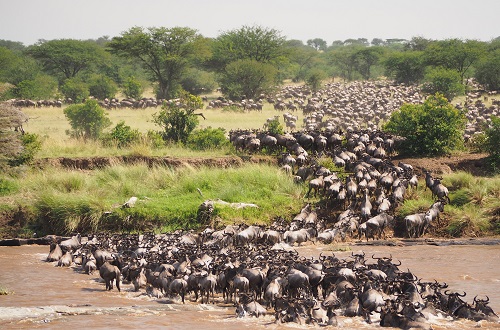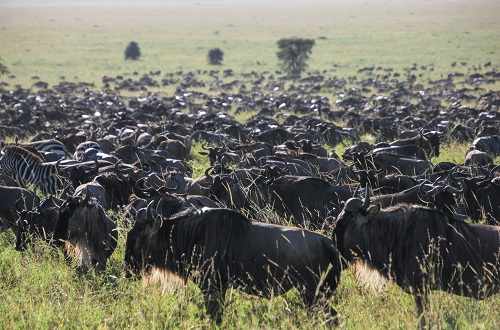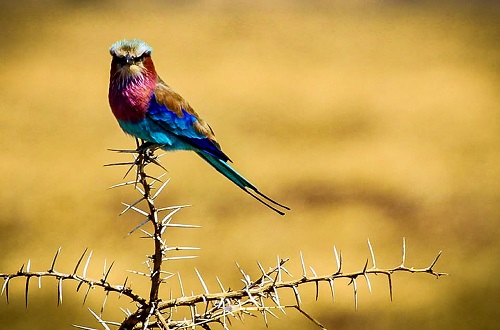
Serengeti National Park is a renowned and vast wildlife reserve located in the northwestern part of Tanzania, East Africa. It is one of the most iconic and diverse national parks in the world, covering an area of approximately 14,763 km2 (5,700 square miles). Established in 1951, Serengeti National Park is a UNESCO World Heritage Site and also forms a part of the larger Serengeti ecosystem, which includes several other protected areas and reserves.
Best time to visit Serengeti National Park in Tanzania
The best time to visit Serengeti National Park is during the dry season, from late June to October, which offers excellent game viewing opportunities as animals gather around waterholes and the grass is shorter, providing clearer views. The wildebeest migration typically occurs from December to September, with specific locations varying depending on the time of year.
Best Serengeti's key features and landscape
1. Savannah Plains
The Serengeti is characterized by its sweeping savannah grasslands that extend as far as the eye can see. These grasslands provide a fertile habitat for an abundance of wildlife.
2. Great Wildebeest Migration
One of the park's most spectacular events is the annual wildebeest migration. Every year, over a million wildebeest, along with hundreds of thousands of zebras and other antelope species, embark on a circular journey across the Serengeti plains in search of greener pastures. This phenomenon is considered one of the most remarkable wildlife spectacles on the planet.
3. Wildlife
The park is home to the famous African "Big Five": lions, elephants, buffaloes, leopards, and rhinoceroses. Additionally, it boasts an impressive diversity of other wildlife, including cheetahs, giraffes, hippos, crocodiles, hyenas, and various species of antelope.

4. Birdlife
Serengeti National Park is a haven for birdwatchers, with over 500 species of birds recorded. These include ostriches, vultures, eagles, storks, and flamingos, among others.
5. Birdlife
The park features unique rock outcrops called kopjes, which serve as excellent vantage points for predators such as lions and leopards. They also provide shelter and nesting sites for various bird species.
6. Rivers and Waterholes
Several rivers and permanent waterholes throughout the park sustain wildlife year-round, attracting a concentration of animals and providing opportunities for visitors to observe them up close.
Best Tanzanian Serengeti National Park activities
1. Game Drives
Game drives are the most popular activity in Serengeti National Park. Guided tours in 4x4 vehicles offer visitors the chance to explore the vast landscapes and encounter a diverse array of wildlife.
2. Balloon Safaris
Hot air balloon safaris provide a unique and breathtaking perspective of the Serengeti's landscapes and wildlife from the sky.
3. Birdwatching
With its rich birdlife, the Serengeti provides excellent opportunities for birdwatchers to spot and identify various avian species.

Serengeti's conservation efforts
The Tanzanian government, along with various international organizations, has been actively involved in the conservation of Serengeti National Park and the preservation of its unique ecosystem. Measures have been taken to combat poaching, manage tourism sustainably, and address human-wildlife conflicts to ensure the long-term viability of the park's wildlife and natural resources.
We are available 24/7
Let us plan your safari tour in Serengeti National Park
